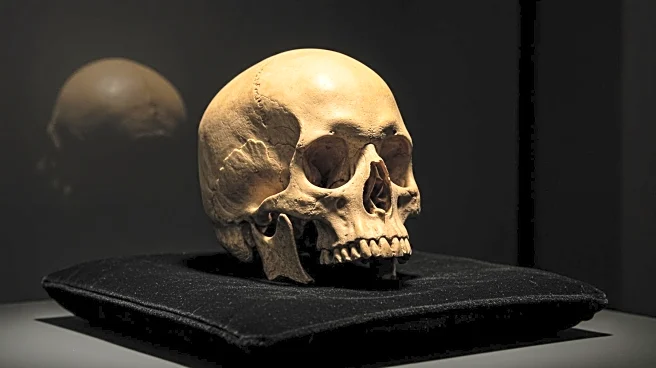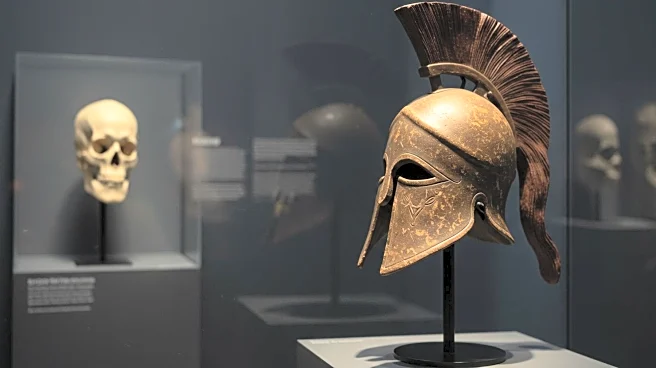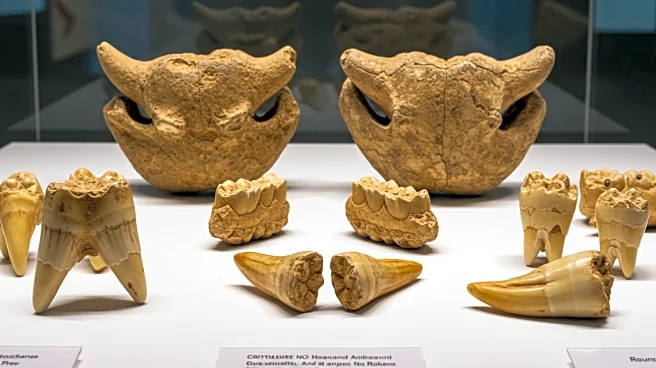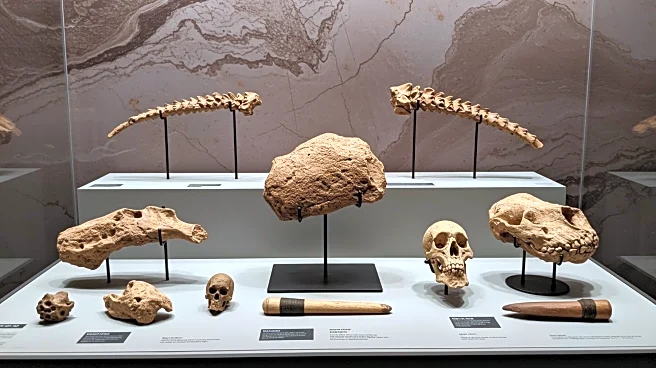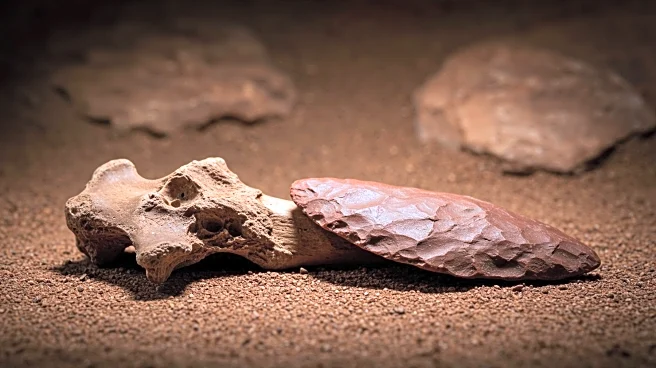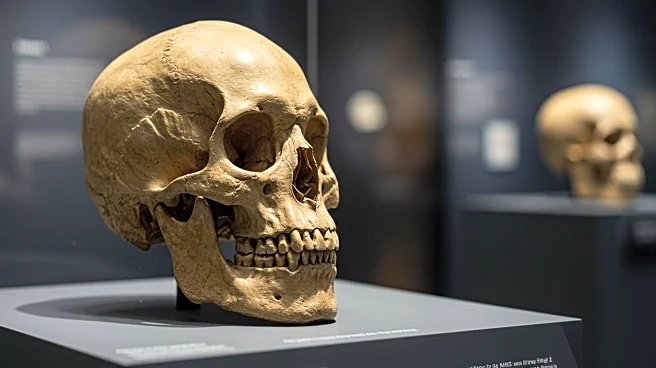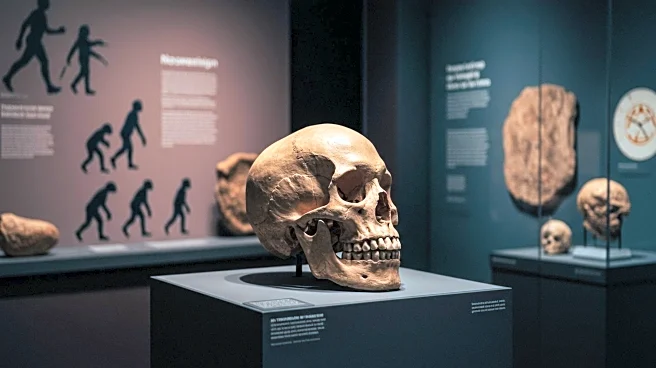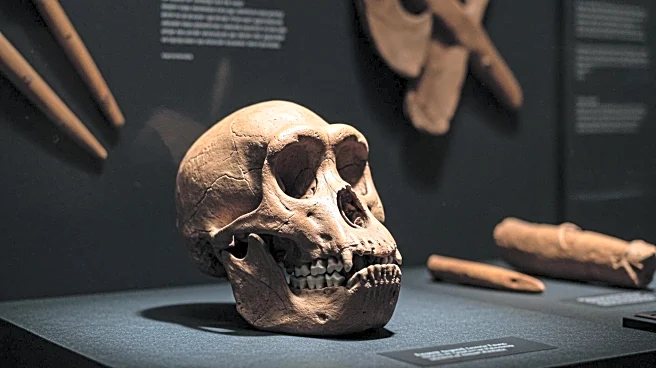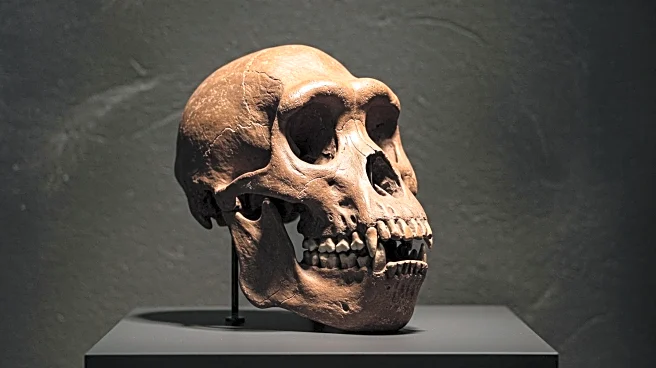What is the story about?
What's Happening?
A recent study has dated a mysterious skull found in Petralona Cave, Greece, to approximately 300,000 years ago, identifying it as neither human nor Neanderthal. The skull, discovered in 1960, has been a subject of debate regarding its place in the human evolutionary tree. Researchers used uranium-series dating to determine the age of calcite deposits on the skull, concluding it belonged to Homo heidelbergensis, a group that coexisted with Neanderthals in Pleistocene-era Europe. The study, published in the Journal of Human Evolution, provides new insights into the diversity of ancient human populations.
Why It's Important?
The findings from the Petralona skull study contribute to the understanding of human evolution, particularly the diversity and coexistence of different human species. By identifying the skull as Homo heidelbergensis, researchers highlight the complexity of human ancestry and the interactions between various groups. This discovery challenges the traditional view of a linear evolutionary path and underscores the importance of studying ancient fossils to uncover the nuances of human history. The research also emphasizes the role of advanced dating techniques in providing accurate timelines for evolutionary events.
Beyond the Headlines
The study of the Petralona skull raises questions about the cultural and social dynamics of ancient human populations. Understanding how different human groups interacted and adapted to their environments can offer insights into the development of early human societies. Additionally, the research highlights the ethical considerations in studying human remains, including the preservation and interpretation of archaeological findings. As new discoveries emerge, they may reshape the narrative of human evolution and influence contemporary discussions on human identity and diversity.
AI Generated Content
Do you find this article useful?
